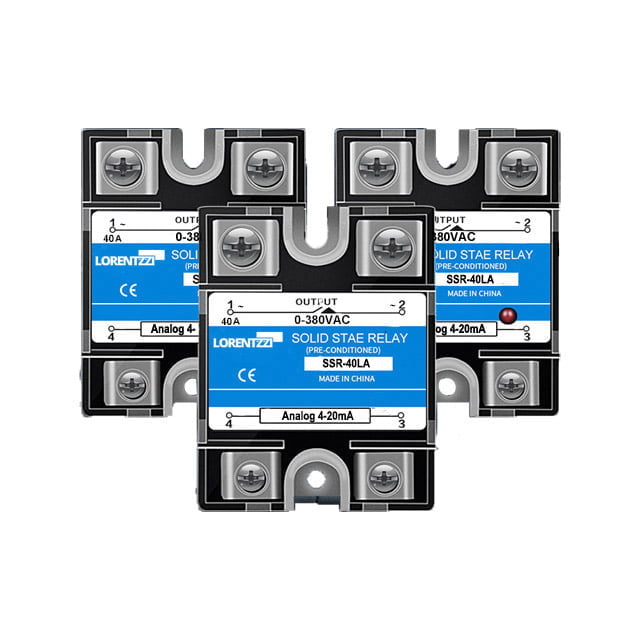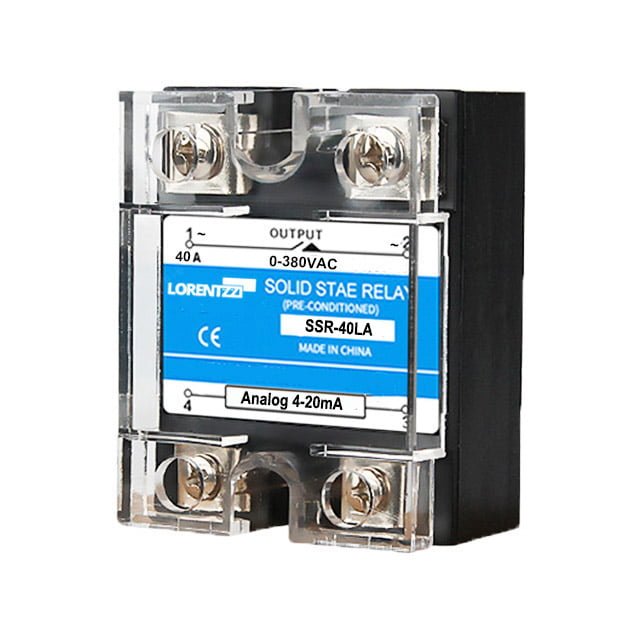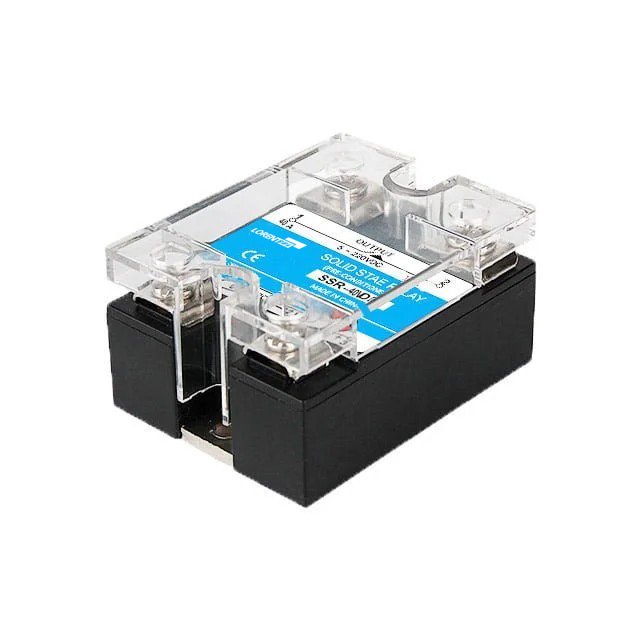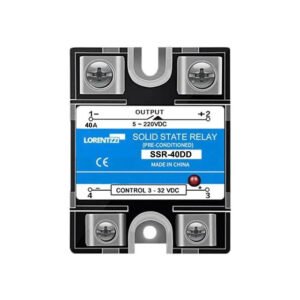Proportional Control Solid State Relay, Analog 4-20 mA or 0-10 VDC Input Introduction:
- Lorentzzi® proportional control solid state relay control signal is one of 4-20 mA, 0-5 VDC or 0-10 VDC. The output voltage can be 0-250 VAC or 0-480 VAC (or simply 0%-100% voltage output).
- Load current can be 10 A, 25 A, 40 A, 60 A, 80 A, 100 A, 120 A. If control signal is 4-20 mA, the model is SSR-(current)LA, if 0-5 VDC or 0-10 VDC, the model is SSR-(current)VD.
- Compared with manual potentiometer control solid state voltage regulator, this one is automatic control. The 4-20mA, 0-5VDC or 0-10 VDC signal can be from analog signal generator or proportional output pid temperature controller.
- This proportional SSR is composed of a thyristor switch circuit, a phase-shift circuit, a hysteresis circuit, an overvoltage absorption circuit.
- It adopts a flame retardant plastic shell, epoxy resin potting, and threaded terminal wiring.
- When in use, we only need to input 0~5 VDC or (0~10 VDC) voltage or 4-20 mA current. It can replace contact type voltage regulators in many occasions.
- Widely used in petrochemical equipment, food machinery, packaging machinery, textile machinery, stage lighting to adjust power, voltage, temperature, brightness, and speed.
Proportional SSR Input Vs Outputs Curve:
Specifications:
| Models available | SSR-10LA/VD, SSR-25LA/VD, SSR-40LA/VD, SSR-60LA/VD, SSR-80LA/VD, SSR-100LA/VD, SSR-120LA/VD |
| Control signal | 4-20 mA or 0-5 VDC or 0-10 VDC |
| Switching on current or voltage | 6 mA/2.3 VDC |
| Shutoff current or voltage | 4.2 mA/1.6 VDC |
| Output voltage range | 0-250 VAC or 0-480 VAC |
| Maximum off-state leaking current | 2 mA |
| Maximum on-state voltage drop | 1.5 V |
| Switching time | Less than 10 ms |
| Product dimension | 57.4*44.8*28 mm |
| Product weight | 100 g |
| Load current | 10 A, 25 A, 40 A, 60 A, 80 A, 100 A, 120 A |
| Operating temperature | -20℃~80℃ |
| Certification | CE |
| Terminals | Screw |
| Remark | When using these SSVRs, please consider using a suitable heat sink to aid cooling, otherwise the high temperatures may cause permanent damage. |










